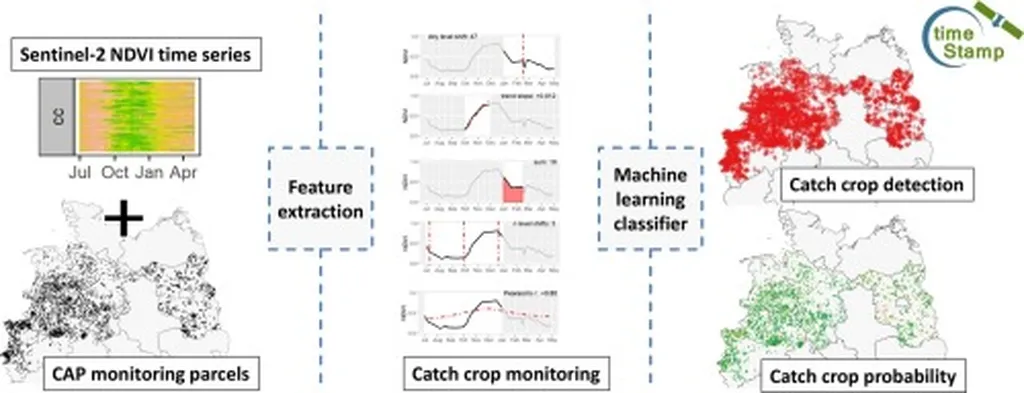In the heart of Germany’s agricultural landscape, a groundbreaking study led by Shanmugapriya Selvaraj from the Julius Kuehn Institute (JKI), Federal Research Centre for Cultivated Plants, is revolutionizing the way winter catch crops are monitored and classified. The research, published in IEEE Access (translated to English as “IEEE Open Access”), leverages the power of Sentinel-1 Synthetic Aperture Radar (SAR) to overcome the challenges posed by dense cloud cover during the autumn and winter growing season.
Winter catch crops play a pivotal role in maintaining soil fertility, health, and protection, while also reducing nitrogen leaching. However, traditional optical remote sensing methods often fall short due to cloud cover, leaving critical data gaps. Selvaraj and her team have addressed this limitation by harnessing SAR time series data, which is unaffected by cloud cover, to identify and classify winter catch crops and their specific types.
The study introduces a two-level hierarchical Random Forest (RF) classification framework. “The first level distinguishes between catch crops and non-catch crops by exploiting phenological contrasts and sowing window differences observed in the SAR time series,” explains Selvaraj. The second level delves deeper, classifying six specific catch crop types using 22 defined crop-specific descriptive features.
The results are impressive. The RF model, trained on 2021 data from Lower Saxony, achieved an overall accuracy of 94.9% in level-1 and 85.7% in level-2. The model’s robustness was further validated through temporal and spatial transferability tests. It maintained strong performance when applied to Lower Saxony data from 2022 and 2023, and demonstrated consistently good results in Brandenburg. While North Rhine-Westphalia showed satisfactory results, some misclassifications in non-catch crops were noted, likely due to phenological shifts.
The implications of this research are far-reaching. For the agricultural sector, this SAR-driven approach offers a reliable and scalable solution for monitoring winter catch crops, enabling farmers to make informed decisions and optimize their practices. For the energy sector, the ability to accurately map and monitor agricultural lands can enhance bioenergy crop planning and management, contributing to a more sustainable energy future.
As we look to the future, this research paves the way for national-level mapping efforts and the potential integration of SAR data into precision agriculture and agri-environmental monitoring systems. Selvaraj’s work is a testament to the power of innovative technology in addressing real-world challenges, shaping the future of agriculture and beyond.
In the words of Selvaraj, “This study highlights the potential of SAR-based frameworks for identifying catch crop types and their applicability for scaling to other federal states of Germany and national-level mapping efforts.” With this technology, the agricultural sector is poised to enter a new era of data-driven decision-making, ultimately benefiting both the environment and the economy.

